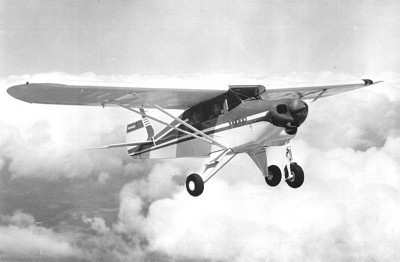Wed, Dec 31, 2014
NTSB Said Carbon Monoxide Detected In Pilot's System, But Not In Sufficient Amount To Cause Incapacitation
The NTSB has released a probable cause report from an accident that occurred October 28, 2013, that resulted in the fatal injury of the pilot of a Piper PA-22-150 Tri-Pacer. Pilot error is cited as the cause of the accident.

According to the report, the pilot was flying his airplane to a hunting location. No one witnessed the departure or accident. A postaccident examination of the accident site indicated that the airplane departed the runway and then impacted the ground in a wooded area about 600 feet from the approximate midpoint of the runway. A postimpact fire occurred. An 8-knot crosswind was recorded about the time of the accident. The loaded weight of the airplane could not be determined due to fire damage. Postaccident examinations of the airplane revealed no mechanical anomalies that would have precluded normal operation. Although the toxicology report showed that the pilot was exposed to carbon monoxide, the level of exposure would only have resulted in a slight headache.
A review of the airplane's maintenance logbooks revealed that the airplane's tires were replaced with larger tires in accordance with a supplemental type certificate the day before the accident. However, the change would have had a small effect on the performance of the airplane. The evidence indicates that the pilot likely lost airplane control during takeoff.
The 51-year old pilot held an FAA private pilot certificate with an airplane single-engine land and instrument ratings. The pilot's most recent third-class FAA medical certificate was issued on April 23, 2013, without any limitations. On the application for that medical certificate, the pilot reported that he had accumulated 625 hours of total flight time and 85 hours in the six months prior to the application. The pilot recorded in his logbook that he had accumulated 719.9 hours of total flight time and 12.8 hours of flight time in the 30 days prior to the accident. The logbook contained a tailwheel endorsement for the pilot dated October 6, 2012. The logbook showed that the pilot's latest flight review endorsement was dated September 12, 2013.
The NTSB determined that the probable cause of this accident as follows was the pilot's loss of airplane control during takeoff.
(Image from file. Not accident airplane)
More News
“We respectfully call on the City of Mesa to: 1. Withdraw the landing fee proposal immediately 2. Engage with the aviation community before making decisions that impact safet>[...]
High Speed Taxiway A long radius taxiway designed and provided with lighting or marking to define the path of aircraft, traveling at high speed (up to 60 knots), from the runway ce>[...]
Aero Linx: International Federation of Airworthiness (IFA) IFA uniquely combines together all those with responsibility for policies, principles and practices concerned with the co>[...]
Controller’s Expectation That VW02 Would Have Departed Sooner Led To An Inadequate Scan And Loss Of Situational Awareness Analysis: A Robinson R-44 helicopter N744AF, VW02 (V>[...]
A Few Questions AND Answers To Help You Get MORE Out of ANN! 1) I forgot my password. How do I find it? 1) Easy... click here and give us your e-mail address--we'll send it to you >[...]
 Aero-News: Quote of the Day (12.09.25)
Aero-News: Quote of the Day (12.09.25) ANN's Daily Aero-Term (12.09.25): High Speed Taxiway
ANN's Daily Aero-Term (12.09.25): High Speed Taxiway ANN's Daily Aero-Linx (12.09.25)
ANN's Daily Aero-Linx (12.09.25) NTSB Final Report: Diamond Aircraft Ind Inc DA20C1 (A1); Robinson Helicopter R44
NTSB Final Report: Diamond Aircraft Ind Inc DA20C1 (A1); Robinson Helicopter R44 ANN FAQ: Q&A 101
ANN FAQ: Q&A 101



